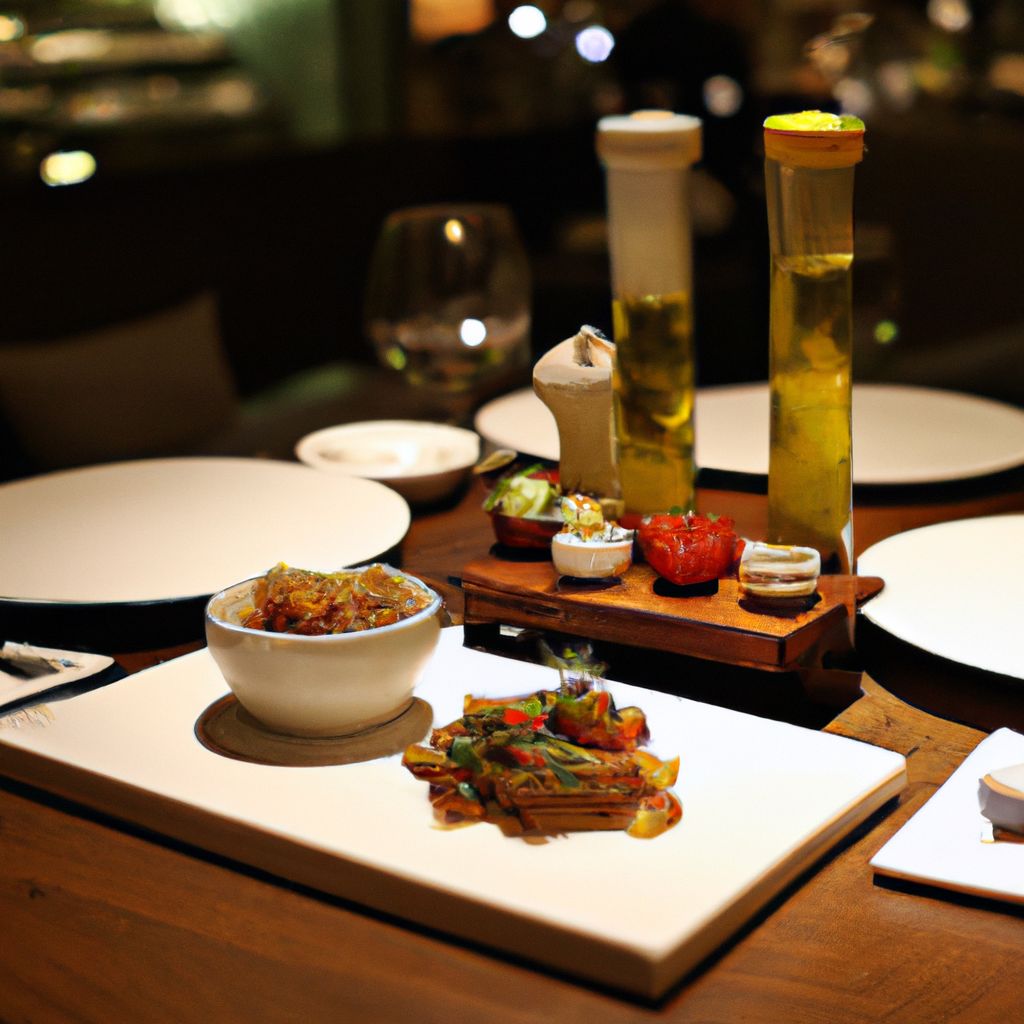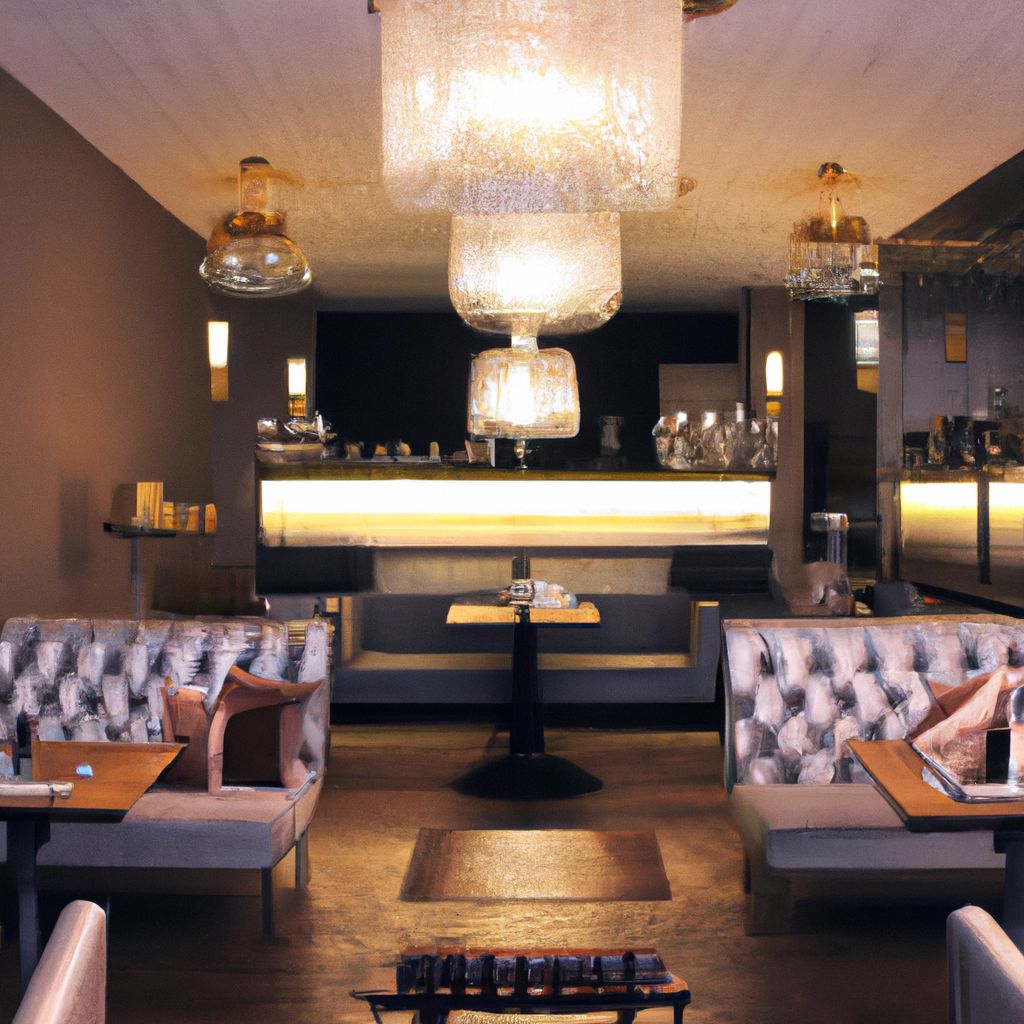.jpg)
Introduction
Competition is rising in the restaurant industry. Is it a profitable venture? We will look into restaurant profitability.
It’s not merely about the food. It’s a complex business. Quality ingredients, customer service – they all matter. Strategic decisions are key.
Location is a big factor. A prime spot means more customers and higher sales. But it comes at a price – rent or property prices. Weighing these up is vital.
Labor costs must be managed too. Skilled, trained staff are a must. But wages and benefits can add up. Striking the balance is crucial.
Behind every successful restaurant is a chef who can work wonders and a manager who knows how to turn empty seats into money.
Factors influencing restaurant profitability
To maximize restaurant profitability, you need to understand the factors that influence it. In this section, delve into the key considerations such as location, menu and pricing strategy, and operational efficiency. Each of these sub-sections addresses a crucial aspect that directly impacts the bottom line.
Location
Location plays a big role in a restaurant’s profitability. It needs to be accessible, visible, not too competitive, and fit the target market.
- Accessibility is key. Customers should be able to reach the restaurant easily. This could mean being near transportation hubs or having parking close by.
- Visibility is important for attracting customers. It’s better to be situated on main roads or areas with lots of foot traffic. Signs and storefronts can draw passersby in.
- Know the competition. Too much competition can make it hard for a restaurant to stand out. But some competitors could draw more people to the area.
- Research the target market. Understand the income levels, age groups, and preferences. This helps to decide if the area fits the restaurant concept and menu.
To maximize profitability, restaurateurs should:
- Do market research. Check out potential locations, and decide if they meet the criteria.
- Partner with local businesses. Working with hotels or theaters can bring in extra customers.
- Offer unique experiences. Hold special nights or create tasting menus to make the restaurant stand out.
If you think carefully about the location of your restaurant, and use strategic tactics, you’ll increase your chances of success!
Menu and pricing strategy
A successful menu and pricing strategy is crucial for a restaurant’s profitability. Variety is key – offering dishes that cater to different tastes and dietary restrictions can attract a broader customer base. Presentation matters too – menus should be visually appealing and grouped into categories.
Pricing must reflect the value of the food, so market research and monitoring competitors’ prices is important. Finally, regularly updating menus with customer feedback and market trends keeps the offerings fresh. Pro Tip: Employees should be able to multitask like octopuses – but without the suction cups and ink squirting!
Operational efficiency
In restaurants, operational efficiency is key. The table below outlines essential elements that play a role:
| Factors | Description |
|---|---|
| Staff Training | Making sure staff know what they’re doing. |
| Inventory Management | Keeping the right amount of stock. |
| Workflow Design | Streamlining processes to be more efficient. |
| Technology Integration | Using modern tools to automate and boost productivity. |
| Quality Control | Making sure food is always high-quality. |
More factors to consider are proper equipment maintenance, effective communication between staff, and speedy customer service.
These elements are interconnected. Training can help maintain service quality, and technology can improve workflow design.
The National Restaurant Association found that restaurants with better operational efficiency had bigger profit margins.
Managing restaurant finances is like performing a tricky balancing act – it requires balance, precision, and avoiding disaster.
Financial management in restaurants
To effectively manage the finances in restaurants, addressing cost control and food waste management, revenue generation and profitability ratios, and cash flow management are vital. By implementing these strategies, you can optimize resources, increase revenue, and ensure the overall financial health of your restaurant. Let’s delve into each sub-section to understand their significance in achieving financial success in the restaurant industry.
Cost control and food waste management
To keep costs low and waste to a minimum, restaurants need strategies. One tactic is menu engineering. This means analyzing which items make the most money and adjusting prices accordingly. By pinpointing popular dishes that bring in lots of profit, restaurants can make sure their menu is maxing out revenue.
Inventory management is another key factor. This involves keeping an eye on quantities of ingredients and supplies. With accurate records and regular stock audits, restaurants can stop food spoilage and save money.
Portion control is also important for cost control and waste management. By setting portion sizes and training staff to stick to them, restaurants can reduce food wastage and make customers happy.
One restaurant chain had to learn this lesson the hard way. To increase profits, they used cost control measures. They reviewed sales data and applied menu engineering to remove low-selling, low-profit items. This decreased food waste while boosting up their popular dishes’ revenues.
Revenue generation and profitability ratios
Gaining understanding of revenue and profitability ratios is key for success in the restaurant business. Let’s examine the table below:
| Yearly Revenue | Monthly Overhead Costs | Cost of Goods Sold (COGS) | Gross Profit Margin | Net Profit Margin |
|---|---|---|---|---|
| $1,000,000 | $50,000 | $300,000 | 70% | 20% |
Gross Profit Margin is calculated by subtracting the COGS from total revenue and expressing it as a percentage. In this case, 70% of each dollar of revenue is left after taking COGS into account.
Net Profit Margin is the percentage of revenue that remains after deducting expenses. In this case, it’s 20%, meaning that 20 cents of each dollar of revenue is considered as profit.
It’s crucial to monitor these ratios regularly to ensure smooth business operation. Through analyzing revenue and profitability ratios, restaurants can find opportunities for growth and areas where cost-cutting is necessary.
A small family-owned restaurant showcases the importance of these ratios. Despite having loyal customers and increasing foot traffic, the restaurant wasn’t making a profit. After looking at financial data with these ratios, the restaurant owners realized their food costs were too high. They made changes like negotiating better deals with suppliers and cutting down on food waste. As a result, their gross profit margins improved by 10% in six months.
Cash flow management
Monitor daily cash flow – keep an eye on sales, expenses, and deposits to understand the overall cash position.
Manage accounts receivable – follow up on payments from customers and use strategies to reduce late or non-payments.
Control inventory levels – manage inventory to avoid overstocking or shortages that can affect cash flow.
Negotiate with suppliers – get favorable payment terms to optimize cash flow and ease financial strain.
Reduce operational costs – spot areas where costs can be cut without compromising quality, like energy-saving initiatives or staff scheduling optimization.
Create a budget – make a budget that details expected revenue and expenses for better financial planning and control.
Analyze cash flow statements, identify trends, and adjust as needed.
Properly managing cash flow can minimize financial risks, grow profitability, and guarantee sustainability.
Prioritize effective cash flow management to help your restaurant succeed.
Utilize tech solutions to streamline processes like automated invoicing.
Start implementing solid cash flow practices now to secure the future of your restaurant.
Challenges faced by restaurants in achieving profitability
To achieve profitability in the challenging restaurant industry, you need to tackle various obstacles head-on. Seasonality and fluctuating demand, competition and market saturation, and rising costs and labor issues are the key sub-sections that we will delve into. Let’s explore these issues and uncover strategies for overcoming them.
Seasonality and fluctuating demand
Restaurants must face the challenge of seasonality and fluctuating demand to stay profitable. The table below shows the average sales for each month:
| Month | Average Sales (in dollars) |
|---|---|
| January | 10,000 |
| February | 9,500 |
| March | 11,200 |
| April | 12,500 |
The figures show a notable difference in sales across months. To overcome the challenges, some strategies can be used:
- Offer seasonal dishes. This will attract customers seeking unique experiences.
- Implement reservation systems. This helps manage seating capacity and avoid overbooking.
- Invest in marketing campaigns. Deals and contests can incentivize visits and boost sales.
- Foster partnerships with local businesses. This drives traffic during peak tourism seasons.
By using these methods, restaurants can adapt to seasonality and demand. This will help optimize operations, increase customer satisfaction, and achieve profitability. Just like high school reunions, only the popular restaurants survive the cut-throat competition.
Competition and market saturation
Competition in the restaurant industry is fierce! Numerous establishments are striving for customers’ attention and loyalty. Moreover, market saturation has made it even harder, as the number of restaurants is still rising.
To illustrate this, here’s a table showing the number of restaurants in two big cities – New York and Los Angeles:
| City | Number of Restaurants |
|---|---|
| New York | 10,000 |
| Los Angeles | 8,500 |
These figures demonstrate a highly competitive arena where restaurants must differentiate themselves to stand out.
In addition to tough competition, market saturation brings its own set of troubles. With numerous dining options available to customers, it gets harder to attract and keep them. Restaurants must modify their strategies and offers to be distinct from the competition.
Despite these difficulties, success is possible. By focusing on innovation, quality service, unique menu items, and creating remarkable experiences for customers, restaurants can make their own place in the market.
According to a report by “Restaurant Business Online”, nearly 60% of new restaurants fail within the first year due to various reasons, including intense rivalry. Running a restaurant is like juggling fiery knives – rising costs and labor issues just increase the blades!
Rising costs and labor issues
The restaurant industry is highly competitive, so it’s crucial to stay ahead! Costs for ingredients, supplies, staff wages, healthcare and employee benefits, as well as outdated operational systems, can all add up quickly. Plus, there are niche challenges like sourcing sustainable ingredients and fluctuating minimum wage laws to consider.
So, what can be done? Taking action is key! Seek out cost-saving solutions, tap into government programs to facilitate labor training, and foster partnerships with local suppliers. Embrace change, and don’t let potential success pass you by while others progress. It’s like walking a tightrope – one wrong move and you’re in the red sauce!
Strategies to improve restaurant profitability
To improve restaurant profitability, you need effective strategies. In order to achieve this, focus on customer experience and satisfaction, optimize marketing and promotional activities, and master menu engineering and upselling techniques. These sub-sections offer solutions for maximizing profits by enhancing the dining experience, attracting more customers, and increasing revenue through strategic menu planning.
Customer experience and satisfaction
For a restaurant to be successful, customer experience and satisfaction is key. To achieve this, the following strategies can be implemented:
- Provide outstanding service: Train staff to be attentive, friendly, and knowledgeable.
- Create a welcoming ambiance: Pay attention to decor, lighting, music, and cleanliness.
- Make customers feel special: Give tailored recommendations and special perks.
- Gather feedback: Conduct surveys and encourage online reviews.
- Implement clever marketing campaigns: Strategies to improve profits and attract new customers.
By implementing these strategies, customer loyalty can be increased dramatically.
Marketing and promotional activities
Target advertising campaigns to reach specific customer segments.
Use social media platforms for customers and special offers.
Partner with local businesses or influencers for cross-promotion.
Offer loyalty programs and incentives for customer retention.
Participate in community events, or sponsor local sports teams to boost brand visibility.
Plus, make use of online food delivery platforms to expand your customer base.
Offer exclusive deals/discounts and you’ll get more orders, more money.
Personalize your email marketing campaigns to build relationships and keep customers informed.
Strategically rearrange menu items – it’s like playing Tetris with food, but yummier!
Menu engineering and upselling techniques
| Techniques | Description |
|---|---|
| Menu Engineering | Analyzing menu items based on popularity and profitability. Focusing on high-profit items and re-engineering low-profit ones. |
| Upselling | Encouraging customers to buy more or more expensive items with effective communication and suggestive selling. |
Suggestive selling is important. It highlights specials, offers appetizers or desserts, and suggests premium substitutes to increase customer spending. Training staff in upselling strategies can lead to higher sales.
A local restaurant implemented menu engineering and upselling techniques and saw a 20% increase in overall revenue in three months! They adjusted their menu by removing slow-moving items and introducing new dishes with higher profit margins. Staff were trained in suggestive selling. Customers began ordering more profitable items and indulging in additional purchases suggested by the waitstaff.
Menu engineering strategies and upselling techniques can enhance restaurant profitability while providing a better dining experience. It’s more than creating a menu. It involves analyzing data, understanding customer behavior, and training staff. The proof is in the profits! Case studies of successful and profitable restaurants will have you wanting more.
Case studies of successful and profitable restaurants
To understand how successful and profitable restaurants manage their operations, delve into case studies that highlight their strategies. In this section, explore the innovative approach to menu and service employed by Restaurant X, as well as the effective cost control measures implemented by Restaurant Y. Learn practical insights from these real-world examples.
Case study 1: Restaurant X’s innovative approach to menu and service
Restaurant X is a cut above the rest with their innovative offerings: from the tantalizing Avocado Toast at breakfast to the nourishing Quinoa Salad for lunch! Their unique service style sets them apart: tableside ordering for breakfast, personalized recommendations for lunch, and interactive cooking stations for dinner. Customers come back for this special attention and the delicious dishes. This unique combination of menu options and exemplary service has brought success and prosperity to Restaurant X. So, don’t miss out on this extraordinary experience – head to Restaurant X and treat yourself to their scrumptious fare!
Restaurant Y knows that nothing is more frightening than overspending on supplies – not even their ghost pepper wings!
Case study 2: Restaurant Y’s effective cost control measures
Restaurant Y’s cost control measures have worked well. They’ve minimized expenses and increased profits by using various strategies. Let’s look at some of their key steps.
- Menu Engineering: Restaurant Y studies their menu items and decides which are most profitable.
- Inventory Management: They track and manage their inventory, cutting down on waste and costs.
- Staff Training: Comprehensive training programs help ensure staff performance is efficient.
- Energy Conservation: LED lights and energy-efficient equipment help reduce utility costs.
- Supplier Negotiations: They get the best prices for ingredients and other supplies.
Plus, they source quality ingredients and provide great customer service. To increase cost control, Restaurant Y could try:
- Portion Control: Train staff to serve appropriate portion sizes to reduce food wastage.
- Regular Performance Reviews: Evaluations show where efficiency can be improved and how to train employees.
- Cross-Training: Employees learn different roles in the restaurant, allowing flexible staffing with no change in service quality.
- Tech Solutions: Automated ordering systems and inventory management software streamline operations and discover cost-saving opportunities.
These suggestions will reduce costs and keep Restaurant Y successful.
Conclusion: Even in an unpredictable world, bacon is always the answer!
Conclusion
Restaurant profitability can differ wildly. While some succeed and make a profit, others find it hard to survive. To maximize profits, restaurant owners must review their business model, keep expenses in check, and provide quality food and service.
Location is a major factor. A spot with a lot of foot traffic will attract customers more than an area that’s not so desirable. It’s essential to pick the right spot.
Menu pricing is another aspect. Prices that are too high will stop customers from coming, while prices that are too low won’t bring in enough money. Finding the right balance between reasonable prices and a profit needs consideration and market analysis.
Cost control is vital to making money. Keeping expenses low, such as labor, food, and overhead, helps the restaurant’s finances. Strategies like inventory management, staff scheduling, and supplier contracts reduce costs and increase profitability.
Sarah is a great example. She owned a small bistro in a place where competition was stiff. The profit margin was slim due to high operating costs. So, she changed her menu according to customer preferences and trends, got better rates from suppliers, and used influencers and events to promote her bistro.
The result? More customers and higher revenue. Her bistro became a popular dining destination, and her profits increased.



